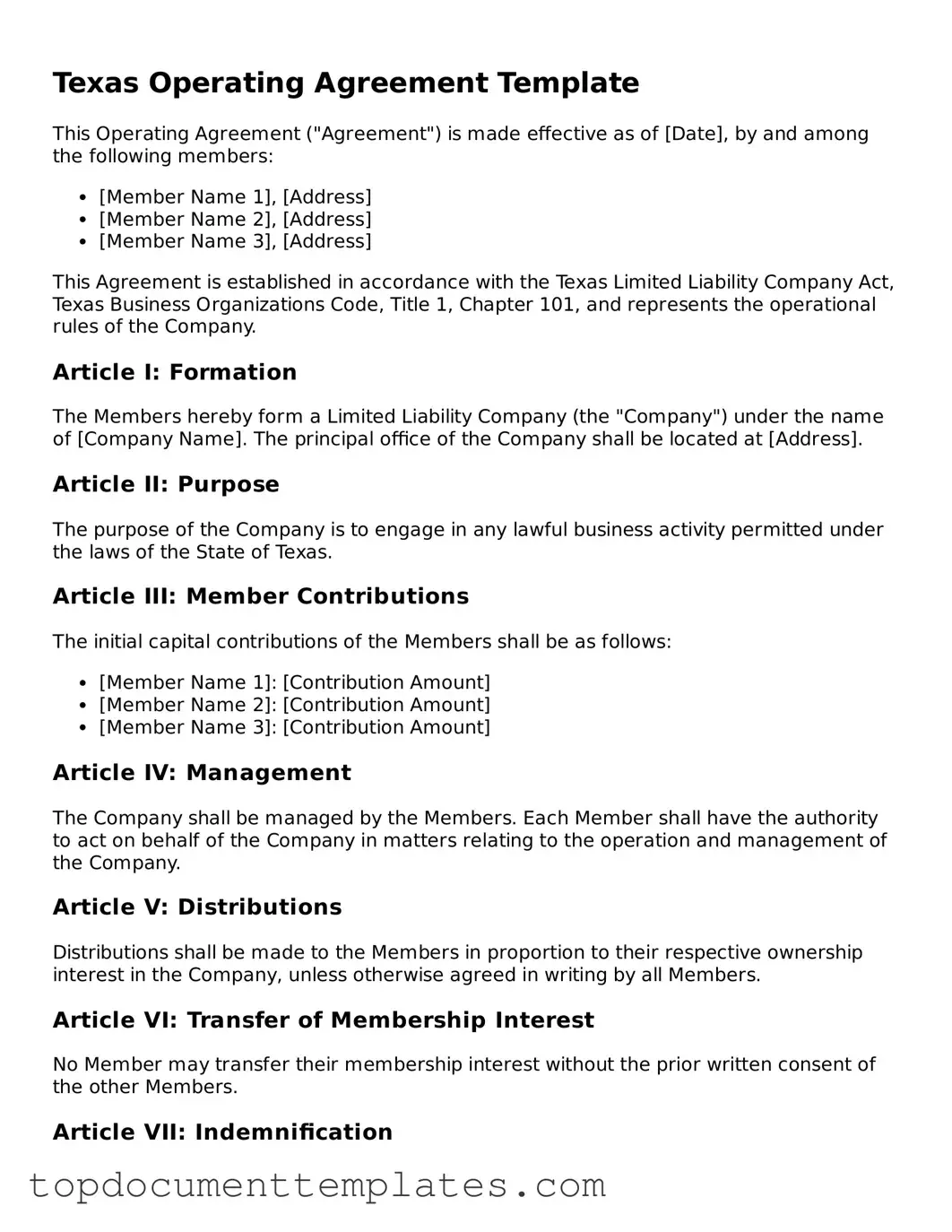The Texas Operating Agreement form serves as a vital document for limited liability companies (LLCs) operating within the state. This form outlines the internal workings of the company, detailing the rights and responsibilities of its members. It typically includes essential elements such as the management structure, profit distribution, and procedures for adding or removing members. Additionally, the agreement may address decision-making processes, dispute resolution methods, and provisions for the dissolution of the company. By establishing clear guidelines, the Texas Operating Agreement helps to minimize misunderstandings and conflicts among members, fostering a collaborative environment for business operations. Understanding the key components of this form is crucial for anyone looking to form or manage an LLC in Texas, as it lays the groundwork for effective governance and operational success.
